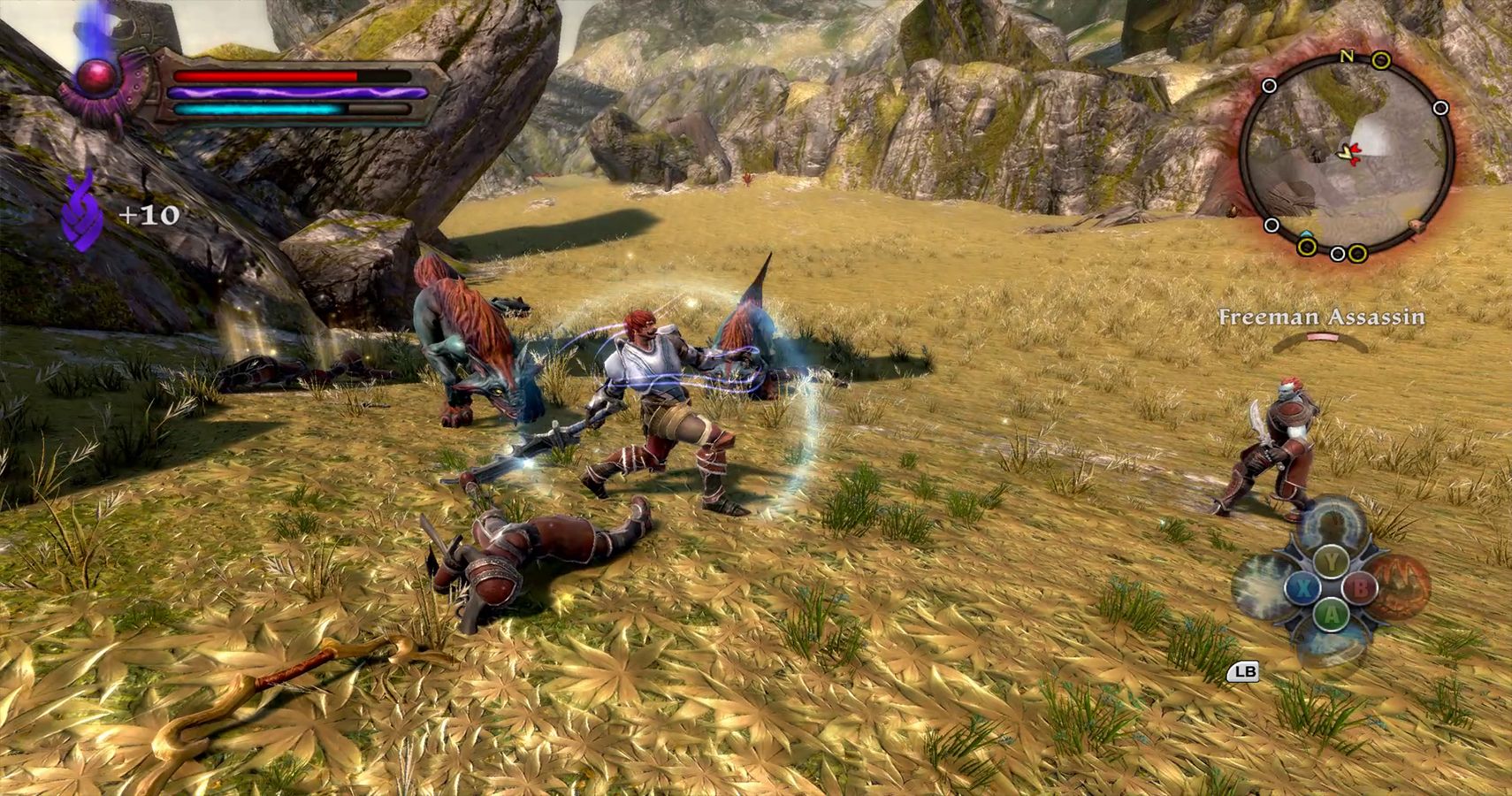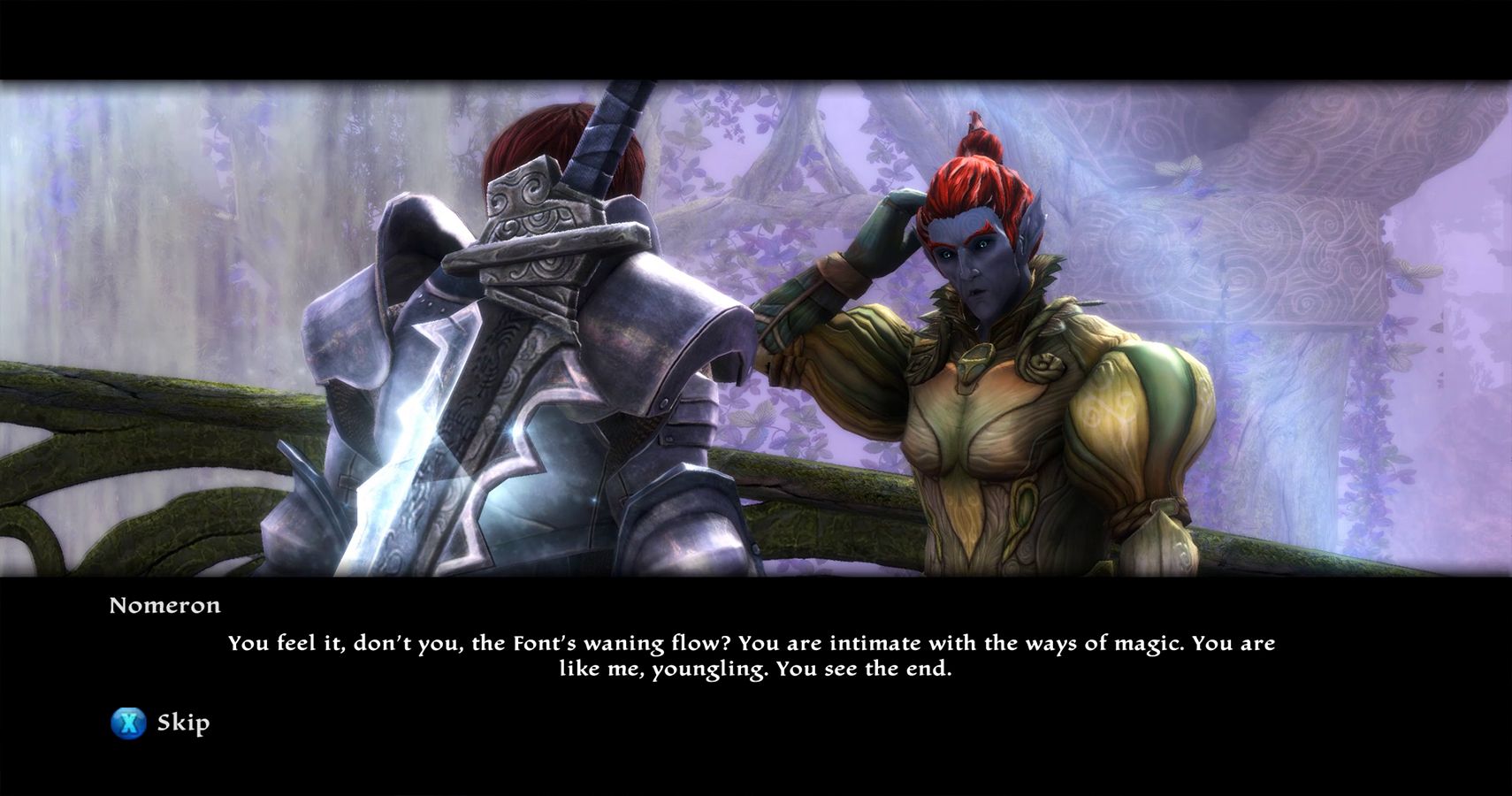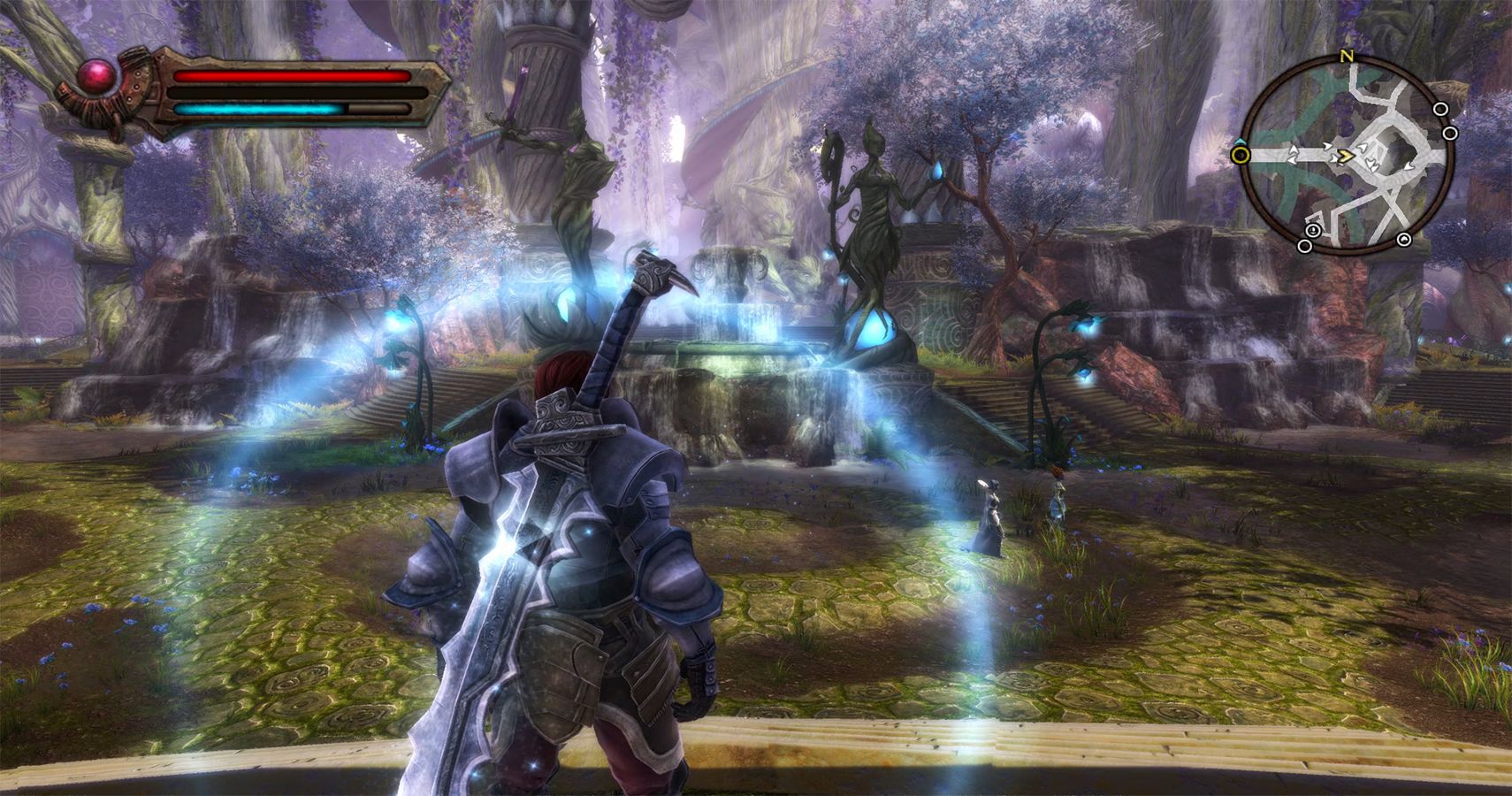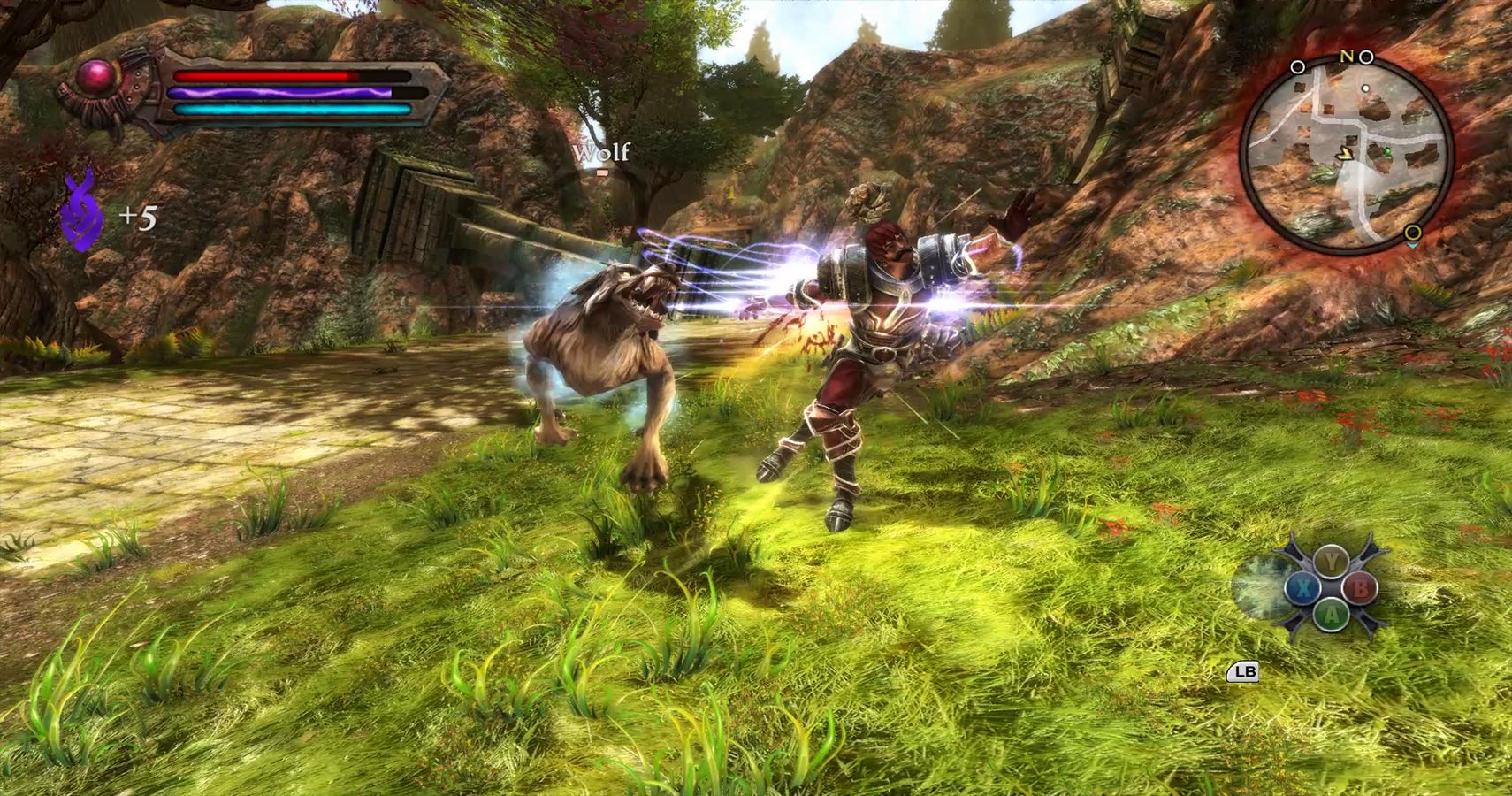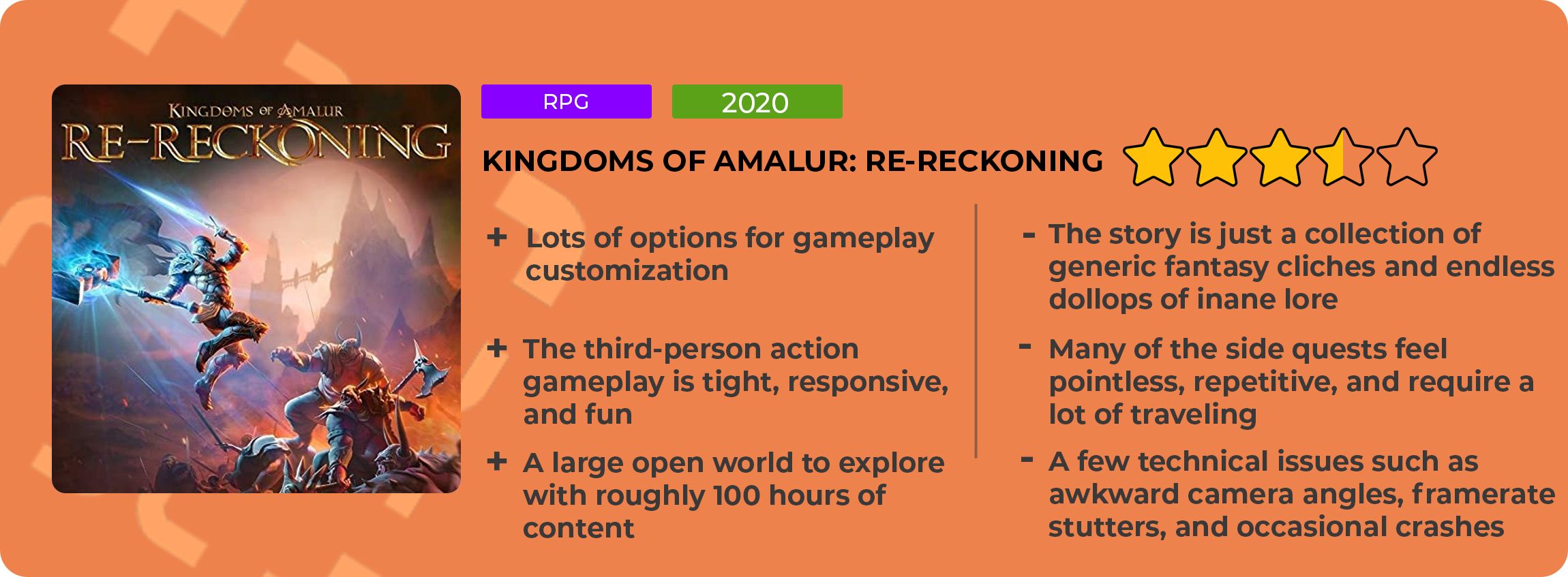The story behind Kingdoms Of Amalur: Reckoning's development is far more interesting than the game's actual narrative. Curt Schilling, a retired Major League Baseball player, decided to get into the game industry. To gain the funds necessary to make the games he wanted to make, his new company, 38 Studios, somehow convinced the state of Rhode Island to give them a $75 million loan to help with development.
However, while Amalur sold well, it didn't sell well enough to help with that massive debt. So, 38 Studios filed for bankruptcy, lawsuits were filed, Schilling was ruined, and the rights to the Amalur property were left in limbo. That is until it was picked up by THQ Nordic, which has now re-released it as Kingdoms Of Amalur: Re-Reckoning.
So, was this game worth all the trouble that it caused? Probably not. But Kingdoms Of Amalur: Re-Reckoning is a solid remaster of an enjoyable game, although it does suffer from a bland setting, a boilerplate plot, and hours upon hours of unnecessary filler.
This Is What Would Happen If Kratos Fell Into Skyrim
Kingdoms Of Amalur is a massive, open-world RPG. Instead of your typical RPG combat, it plays like something out of the God Of War or Devil May Cry franchises. You get all of your standard RPG skills and stats along with fast-paced third-person action gameplay.
If you're a fan of pumping points into skill trees, then you're going to love this game. There are passive skills that anyone remotely familiar Skyrim should know. This includes blacksmithing, lock-picking, stealth, persuading people to give you their stuff, etc. Then you have your combat skills, which fit into one of three categories: Might, Sorcery, and Finesse (which are fancy terms for strength, magic, and agility). These are broken up into skill trees that grant you special spells or abilities and give you proficiency with any of the nine different weapon types.
That's what's great about Amalur. While many games punish you for wanting to try out all of the toys, this one doesn't care what you do as long as you're murdering every kobold or bear you come across. You can specialize and become a rapid-fire archer who can make potions, or you can be a jack of all trades. It feels truly customizable and allows you to play however you want.
You can equip one primary and secondary weapon along with four slots for spells or abilities. You also have a power meter that when used puts you into Fateshift mode - also known as Rage Of The Gods or Devil Trigger - that increases your attack power and lets you perform a special finishing move that can net you extra experience points.
The combat isn't quite as refined as something from the aforementioned God Of War or Devil May Cry games, but it's pretty close. I had a lot of fun with the gameplay, although the camera could be problematic at times. Amalur lacks an enemy lock-on system, so as an alternative, the camera sort of zooms out and pans around so you can see the entire battlefield. This worked out fine, but there were some encounters where it got a little out of control. Sometimes I couldn't tell where the camera was pointed at until it finally centered on my character again. Apart from that though, the gameplay was what kept me going, as I loved flinging magical chakrams and bashing people with giant hammers.
More Like A Forgettable Realm
The narrative and setting of Amalur were created by R. A. Salvatore, the author of several best-selling novels in the Forgotten Realms series. This is actually quite shocking because Amalur's plot is painfully generic.
You play as the Fateless One, a formerly dead person whose soul was re-inserted into their body via an invention of magic and science called the Well Of Souls. In doing so, you are now untethered to the laws of Fate causing unforeseen changes to the world. But the Well's creation has angered a race of evil elves - I'm sorry, I mean "Fae" - called the Tuatha who see it as an affront to the natural order. So they enact a plan to kill you and conquer the world, forcing you to set out on a quest to stop them and their ruthless, mad king.
The biggest problem with the story is that it feels like someone took a template for a standard fantasy tale, filled in all the blanks with gibberish, and that was that. It's a fantasy plot you're seen and heard a thousand times before, only in this one, elves are called Fae, dwarves are gnomes, and so forth.
All of the dialogue feels like endless exposition. Every time you talk to anyone, they just bombard you with names of places, people, magical items, gods, and other junk. Amalur continues to throw chunks of lore at you, but never gives you a reason to care about any of it. I reached a point where I was so done with listening to the inane chatter of NPCs that I started skipping through all the dialogue just so they would shut up about whatever ancient cave or fiendish sorcerer they were yammering on about. The writing is never cringe-worthy or awful, but I wish it was because at least then it might have been memorable.
This a real shame because it makes all of the quests feel pretty pointless since I simply didn't care about what was happening. And since there's about 100 hours worth of stuff to do, that's a whole lot of apathy. You could spend 20 hours alone just doing the side quests in the first area. That's great if you love the combat and want a game that's going to take you about two months to complete. But, with a few exceptions, most of these side quests feature the same repetitive goals like fetching some plants or killing a number of monsters.
Even if you want to do all of these quests, getting to them can be a pain. Amalur's world is gigantic. There are some neat places to visit like the city of Ysa, but most of the map is filled with vast, empty fields that you have to run around to get anywhere. Amalur does have a fast travel system, so traversal isn't too cumbersome, but you need to discover locations before you can teleport back to them. Get ready for a whole lot of wandering, because the spaces between places can be pretty wide.
Even Fate Can't Handle Fullscreen
For most of the early portion of my experience with Amalur, it didn't seem to look or play any better than it did on the Xbox 360. It wasn't ugly, but it had the appearance of a game that's over eight years old. The framerate could go to sub-30 FPS at times and stuttered often. Worst of all, around the time that I reached Rathir, it began to repeatedly hard crash my computer to the point that I had to reboot it.
But then, when I fooled around with the options and put the game into Borderless Windowed mode, it suddenly looked ten times better and ran at 60 FPS without a care in the world. It still stuttered and it's not the prettiest game you can find, but it stopped crashing - or at least it didn't crash as often - and played pretty well. I'm not sure if this was a bug, but if you're looking at getting this, go Borderless Windowed unless you want to constantly restart your entire PC.
At Least A Solid Week's Worth Of Adventure
When it comes to Kingdoms Of Amalur: Re-Reckoning, I think it comes down to what you're looking for in an RPG like this. If you care about an engrossing plot that's going to suck you into a fantasy world, then you'll probably be disappointed here. If you want a game that's going to let you spend 100 hours slicing through enemies until they explode like pinatas filled with loot, then you'll get some bang for your buck.
Kingdoms Of Amalur: Re-Reckoning is let down by a lackluster plot and a few technical issues, but if you focus on the gratifying combat, it's a fine way to burn through 20 to 30 hours.
A PC copy of Kingdoms Of Amalur: Re-Reckoning was provided to TheGamer for this review. Kingdoms Of Amalur: Re-Reckoning is available on PC, Playstation 4, and Xbox One.
Kingdoms of Amalur: Re-Reckoning


